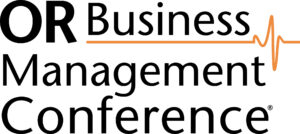Session: Strategy to reduce temporary labor expense
Editor's Note
“How many of you are still struggling with staffing?” Tammy Straub, MSN, RN, APRN, CNOR, administrator of perioperative services at Lehigh Valley Hospital and Health Network, asked attendees of this session. Everyone in the room raised their hands. Straub and Alexandre Warman, MBA, CEBA, administrator of perioperative business services at Lehigh Valley Health Network, both looked like they expected that type of response from the audience. Indeed, the statistics they shared show this issue is endemic—national projection for RN openings by 2031 is 195,400, for instance. “Everyone in this room will be competing with each other for the same staff,” Straub said.
Straub and Warman used Lehigh Valley in Allentown, Pennsylvania, as an example of the types of staffing challenges with which healthcare leaders are grappling. In their case, it’s geographical. “We’re close to Philadelphia and about 1 hour and 10 minutes away from New York City. What do you think we struggle with the most?” Straub asked before answering, “Salaries.” Despite being a large health network, she said, their system struggles with attracting talent when big metropolitan areas will be more attractive to most staff. “We can’t compete, salary-wise. So we have to get creative.”
While many facilities have coped with staff shortages by hiring temporary labor in the way of travelers—another show of hands revealed that most people in the room were doing exactly that—the answer that has worked for the speakers is creating float pools. “It’s possible to retain staff by creating your own internal float pool,” they said. Their float pools have allowed them to:
- reduce the cost of temporarily labor
- increase pay differential to support colleague retention and attract external candidates
- have the flexibility to support and adjust staffing throughout the perioperative division.
To guarantee success, they had to carefully screen eligibility when accepting staff into their float pool program. Internal staff who are interested have to follow an application and interview process, as well as:
- be in good standings
- meet clinical experience/requirements
- require positive feedback on clinical and intrapersonal skills from leadership/management.
As for the program itself, it is split into central and multispecialty/multisite. The central floats include staff who cover four or fewer specialties/areas and/or travel to four or fewer sites—the RNs and surgical techs receive a differential of $5.00/hour. Multispecialty/multisite floats include staff who perform five of more specialties and/or travel to five or more sites—RNS receive a differential of $15.00/hour, and surgical techs receive $12.00/hour.
For the rest of the session, the speakers walked attendees through their float staffing model, including training requirements, volume of staff, and future applicability. Attendees received a room utilization template for staff allocation, a copy of the program requirements, and the educational process for the float staff.
Read More >>

 Free Daily News
Free Daily News